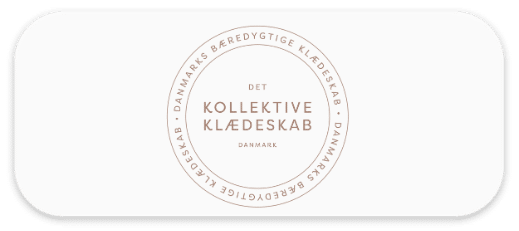What Subscription model works for your business plan?
Published: September 26, 2024
We might just think about streaming and car sharing when we think of subscription models but there’s a lot of different types that fit different business structures, products and services to expand your portfolio and market reach. Get to know them in our article.
Overview:
- The SaaS Model
- The Network Model
- The All-you-can-eat Library Model
- The Surprise Box Model
- The Peace-of-mind Model
- The Private Club Model
- The Front-of-the-Line Model
- The Membership Model
- The Simplifier Model
- The Consumables Model
The SaaS Model
Probably the most known subscription model provides software solutions for private and/or corporate customers. Depending on the product, this can be used right out-of-the-box via browser or a simple desktop app (e.g., Teams, Canva, Adobe).
Other solutions – mainly for companies – require a more complex implementation but still save the customer time and resources by providing maintenance, cloud-based updates, and further development of new features.
SaaS is a wide market but has a few common basics to be successful.
- Trial period, learning material and easy onboarding to easily access the value of the solution
- Ease of use, compliance, and intuitive interfaces are crucial to compete on the market
- It’s very common to offer different pricing models for B2C and B2B customers and allow for easy up- and downgrading depending on product features
- Additionally, different subscription models often support basic (or B2C), professional (B2C/B2B) and enterprise (B2B) requirements
- Especially for B2B customers, service level agreements (SLA) need to be clearly defined
- Enterprises often require individual contracts and priority support to handle big and small issues
Examples: CRM software, design software, content management systems, subscription management solutions
Customer case study: SevDesk

The Network Model
A subscription service that gains in quality, the more people use it. However, the network model is not just about the quantity but also the quality. For example, you’re more inclined to sign up for a dating site that has users who live close to you, have similar interests and look for the same type of relationship as you.
The network model often starts with a free subscription but can be upgraded to receive more perks.
- The free version needs to be attractive enough to entice new users
- Engagement is key, so make sure your network model has plenty of things for your free and paid users to do
- The paid subscriptions usually offer more information (e.g., who visited your page) and more actions (e.g., writing direct messages) – make sure, that the perceived value of the paid subscription is much higher compared to the free version
Examples: Dating sites, multi-player gaming, review platforms, social media platforms
Customer case study: Symbion

The All-you-can-eat Library Model
Most media publishers use the all-you-can-eat library model as a service. It’s easy: you pay a monthly or annual fee and get a huge media selection (actually, library cards work the same, just usually with much lower monthly fees ;)
The library model needs to have a few basics down to be attractive for customers:
- A good selection that is always up-to-date
- An intuitive platform to find what you’re looking for
- A strong app that allows for access via different devices (PC, smartphone, tablet, etc.) and support heavy use (e.g. binge watching a show)
Examples: streaming services, digital newspapers or magazines, learning platforms,
Customer case study: RTL+

The Surprise Box Model
People love surprises, especially if they get to choose the overall category of it. Surprise boxes are regular product boxes of new, unique or exclusive products for a specific purpose (e.g., healthcare, cosmetics, clothing, toys, consumables, etc.).
Surprise boxes can have different price categories depending on the frequency and volume (you can offer small and big boxes) and they’re especially attractive as gifts.
- The perceived value of the products needs to fit or even surpass the subscription price (packaging, info material and the overall quality need to fit your pricing)
- Different frequencies and pricing models can create low entry opportunities to entice customers
- Use information on the products, how to use them and what makes the special either as a print out or email helps to turn the subscription into a true experience (that feels like a present to the customer)
Examples: Toy surprise boxes, food surprise boxes, cosmetics boxes
Customer case study: Champagneklubben

The Peace-of-Mind Model
Anything that takes the load of everyday troubles is welcome to customers. The peace of mind model provides protection and support in case something unexpected and unfortunate happens.
Transparency over the covered services and all contractual agreements as well as a pricing model that feels proportionate to the risk and reward is key for this subscription model.
- Offer comparisons of your plans to show customers what is included in each plan
- Provide educational material, so customers understand why they need your service (and how to use it properly)
- This subscription model needs a service quality that goes above and beyond since your customers will make use of your services during stressful and often highly negative situations
Examples: insurance, legal services, warranties
Customer case study: Legaltegrity

The Private Club Model
The Private Club model is usually highly exclusive. There’s fewer members than for most other membership models because the exclusivity is part of the appeal. Although it’s most popular in its physical form (an actual club), it also exists in the digital space and often provides exclusive (and high-priced) access to data.
- The product or service needs to be rare and one-of-a-kind to attract members
- The customer journey needs to be highly personalized
- Since the club membership is not cheap, its marketing and sales need to fit the clientel, so discounts and vouchers will likely not attract the right leads
Examples: Exclusive fitness clubs or dating sites, car or bike sharing, sport facilities, research and analytics website, restaurant/foodie clubs
Customer case study: Det Kollektive Klædeskabet

The Front-of-the-Line Model
The front-of-the-line model offers services such as priority access, first picks and faster deliveries. It can be applied in all areas where the demand and waiting time are high.
To offer front-of-the-line access, a proper customer survey is important to gauge how much people are willing to pay for their prioritized access. Additionally, this is harder to scale, since you need to make sure that the front-of-the-line doesn’t get too long.
- Cross-channel communication is important, so customers get the most of their plans by knowing time slots, dates, locations as well as purchase windows
- Many front-of-the-line subscription plans also offer additional perks (e.g., an additional bag on board of a plane or a complimentary drink)
- Make sure that any interruption of the experience is solved fast, since time is of the essence for this specific customer group
Examples: Priority flight access, first access to hardware products, first pick for exclusive and limited products (e.g., fashion, jewelery, footwear, art, gourmet foods), priority passes for parks, cinemars and other entertainment venues
Customer case study: Waitly

The Membership Model
Everyone is a member nowadays. Memberships can be either free of charge or paid, depending on what you offer and what your membership goal is. Free memberships usually aim to increase loyalty whereas paid memberships provide special perks and access to more functions and data.
- Make sure that members receive or have access to regular information how to best leverage their membership
- Provide community spaces (e.g. on social media), so members can interact with each other
- Make use of cross-channel communication to reach a wide audience (or the right audience, depending on your business)
By the way, memberships can also be combined with some of the other models we’ve covered, such as the private club, the all-you-can-eat library or the network model.
Examples: Supermarket point programs, job platforms, learning platforms, exclusive dating sites (e.g., for academics or specific religions)
Customer case study: Boozt

The Simplifier Model
This subscription model includes services that your customers need on a regular basis to make their life easier.
The simplifier model is 100% based on trust and the relationship your customers have with the service providers. It is possible that customers prefer a specific person or group to perform the services. And it is important to have a base standard for everything, no matter who provides the service.
- Make sure to have standardized services and work hours so you can work with fixed pricing
- Service level agreements are crucial to provide transparency
- Scaling can be difficult when it comes to keeping the quality of services high
Examples: dog-walking, housekeeping, gardening, babysitting, car repairs
Customer case study: Ejner Hessel

The Consumables/Replenishment Model
Last, but certainly not least, is the “replenishment model” which means that many people like to subscribe to regular product orders that they use in their daily lives (without any surprises). (Read more about subscription boxes and how to use them)
- The consumable model works best if customers can pick the frequency and volume and adjust these flexibly. Up- and downgrading should be easy.
- Logistics are of the essence, since many customers depend on a timely delivery
- Especially for food and beverages, sample boxes can help customers to try out a wider variety of your products
Examples: food boxes, baby food, pet food, household items, coffee, razors, printer ink, beverages
Customer case study: Matas

________
Billwerk+ offers subscription management, recurring billing and payment solutions made in Europe for European business models. Set up and customize your subscription plans, discounts, and pricing in no time and grow your subscription business with an intuitive platform including a data dashboard with real-time insights into your revenue and subscription numbers.
Or book a free first consultation with one of our experts.



